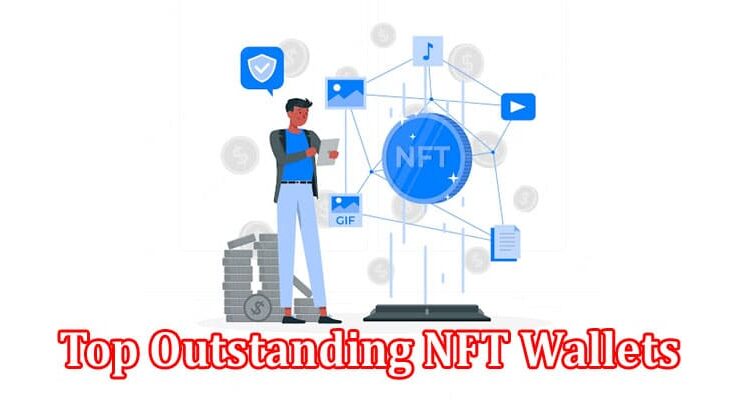Non-fungible tokens, widely known as NFTs, have exploded in popularity in the digital assets market. These unique tokens have gained a significant foothold in the art and entertainment world, making it possible for artists and creators to monetize their unique creations in unprecedented ways. Unlike cryptocurrencies such as Bitcoin or Ethereum, which are fungible and can be exchanged on a like-for-like basis, NFTs represent unique digital assets that cannot be replaced with something else.
NFTs are built on blockchain technology, the same decentralized digital ledger system that underpins cryptocurrencies. However, while cryptocurrencies are designed to act as a medium of exchange, NFTs are designed to represent ownership of a unique asset. This uniqueness is what gives NFTs their non-fungible characteristic, meaning they cannot be exchanged on a like-for-like basis.
The concept of NFTs is not entirely new. The idea was first introduced with CryptoKitties, a blockchain-based virtual game that allows players to purchase, collect, breed, and sell virtual cats. However, the application of NFTs has expanded significantly beyond virtual gaming. Today, NFTs are used to represent a wide range of digital assets, including art, music, video clips, virtual real estate, and more.
The Value Behind NFTs
The value of NFTs lies in their uniqueness and the verification of ownership they provide. NFTs are stored on the blockchain, which records every transaction and gives each NFT a unique and immutable record of ownership. This traceability and transparency make NFTs particularly valuable for digital artists and creators who can prove their work’s authenticity and track its ownership chain.
Another significant aspect of NFTs is the potential for royalties. Unlike traditional art sales, which provide artists with a one-time payment, NFTs can be programmed to give artists a percentage of any future resales. This feature gives artists the opportunity to benefit from the appreciation of their work over time.
However, the value of NFTs is not without controversy. Critics argue that the high prices paid for some NFTs are a result of speculation and hype, rather than the intrinsic value of the digital asset. Furthermore, concerns have been raised about the environmental impact of NFTs, as the blockchain technology they rely on is energy-intensive.
How Do NFTs Work?
NFTs are built using blockchain technology, specifically a type of blockchain called Ethereum. Ethereum is unique because it expands beyond the financial use case of Bitcoin, allowing for the creation of smart contracts that can automate transactions and create unique digital assets like NFTs.
To create an NFT, a digital creator uploads their work to a platform that supports NFTs. The platform will then mint a unique token that represents that work on the blockchain. This token includes information about the work, including who created it, when it was created, and any other pertinent information.
Once minted, the NFT can be bought, sold, or held by anyone with an Ethereum wallet. Transactions are recorded on the blockchain, providing a transparent and immutable record of ownership. This transparency allows for the verification of authenticity and provenance, making NFTs particularly attractive for digital art and other unique digital assets.
The Rise of Digital Assets and NFTs
The rise of digital assets and NFTs is a reflection of the digital transformation that is sweeping across all sectors of the economy. The pandemic has accelerated this trend, pushing more activities online and sparking a surge in demand for digital content and experiences.
Digital assets, from cryptocurrencies to NFTs, are at the forefront of this digital revolution. They offer a new way to own, trade, and invest in assets that are entirely digital and decentralized. NFTs, in particular, have captured the public’s imagination with their potential to change how digital content is owned and monetized.
In 2020, the market for NFTs exploded, with sales exceeding $250 million, up from just $62.5 million in 2019. High-profile sales, such as the $69 million sale of a digital artwork by Beeple, have further fueled interest and excitement around NFTs.
However, the rise of NFTs has also sparked debate and controversy. Critics argue that the market is a speculative bubble, with prices driven by hype and FOMO (fear of missing out), rather than the intrinsic value of the digital assets. Nevertheless, proponents argue that NFTs represent a paradigm shift in the ownership and monetization of digital content, which could have far-reaching implications for artists, creators, and the broader digital economy.
Understanding NFT Wallets
Just like you need a physical wallet to store your cash and cards, you need a digital wallet to store your NFTs. NFT wallets are software programs that allow you to store, send, and receive NFTs. They interact with various blockchains to enable users to send and receive digital currency and monitor their balance.
NFT wallets can be either custodial or non-custodial. Custodial wallets are managed by a third party, such as a cryptocurrency exchange. These wallets store the user’s private keys, which are the critical cryptographic tool that allows users to access and manage their NFTs.
Non-custodial wallets, on the other hand, give users complete control over their private keys. This type of wallet is more secure because it reduces the risk of losing your NFTs if the third-party provider is hacked. However, it also means that if you lose your private keys, you lose access to your NFTs.
A Comprehensive Review of the Top Outstanding NFT Wallets
When it comes to safeguarding your NFTs, choosing the right wallet is crucial. Many NFT wallets are available, each with unique features and security measures. Here are some of the top outstanding NFT wallets:
- MetaMask: This is one of the most popular Ethereum wallets and supports all Ethereum-based NFTs. It is a browser extension which makes it easy to interact with websites that support NFTs. MetaMask is non-custodial, meaning you have full control over your private keys.
- Trust Wallet: This mobile wallet supports a wide range of digital assets, including NFTs. It is non-custodial and includes a backup facility to help you recover your assets if you lose your device.
- Enjin Wallet: This wallet is designed specifically for gaming and NFTs. It supports a wide range of blockchain assets, including Ethereum, Binance Smart Chain, Litecoin, and more.
- Rainbow Wallet: This is an Ethereum wallet that focuses on user experience. It has an intuitive interface and supports a wide range of Ethereum-based NFTs.
- Coinbase Wallet: From the popular cryptocurrency exchange Coinbase, this wallet supports both cryptocurrencies and NFTs. It includes features like a secure enclave for private key storage and a simple backup facility.
How to Choose the Right NFT Wallet for Your Needs
When choosing an NFT wallet, there are several factors to consider. Here are some tips to help you make the right choice:
- Compatibility: Ensure the wallet supports the type of NFTs you have. Most NFTs are based on Ethereum, but some use other blockchains.
- Security: Look for wallets that provide strong security measures, like encryption for private keys, a secure backup mechanism, and two-factor authentication.
- Control: Consider whether you want a custodial or non-custodial wallet. Non-custodial wallets give you full control over your private keys, but they also require you to take full responsibility for your security.
- User Experience: Choose a wallet that is easy to use and has a good user interface. This is especially important if you are new to NFTs and digital assets.
- Features: Look at the additional features the wallet offers, such as the ability to interact with NFT marketplaces or other decentralized applications.
The Future of NFTs and Digital Asset Security
The future of NFTs is intrinsically linked to the future of digital asset security. As the value and importance of digital assets grow, so too will the need for secure ways to store and manage these assets.
As for NFTs themselves, they are likely to continue to grow in popularity and importance. While the current hype around NFTs may eventually die down, the underlying concept of unique digital assets is here to stay. NFTs have the potential to revolutionize how digital content is owned and monetized, and this potential is only just beginning to be realized.
Conclusion
Non-fungible tokens, or NFTs, represent a new frontier in the digital assets market. These unique tokens are changing how digital content is owned and monetized, and their popularity is only set to grow. However, like all digital assets, NFTs need to be securely stored and managed. This is where NFT wallets come in.

Caroline is a dedicated writer with a passion for keeping readers informed. Specializing in providing the latest news updates and unbiased reviews, she strives to deliver accurate and insightful content. With a keen eye for detail and a commitment to journalistic integrity, Caroline ensures that her readers are always well-informed. Stay tuned for her latest articles to stay up-to-date on current events and trends.




